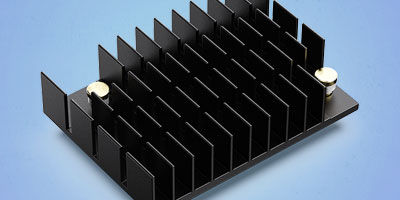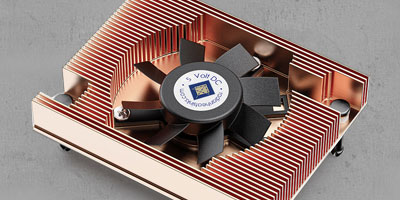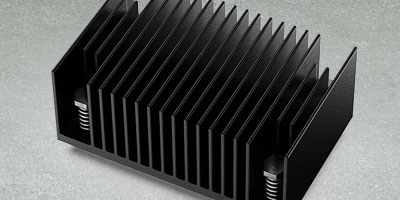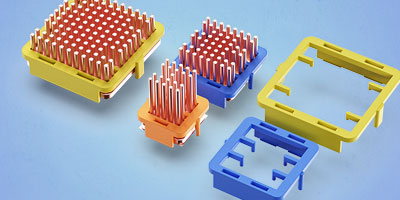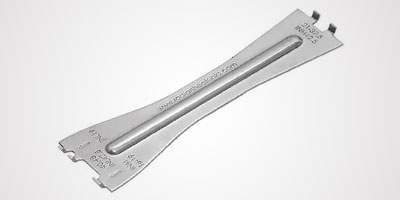Skiving involves shaving thin metal layers from a solid block to create intricate fins that increase surface area and improve heat dissipation. Our skived heatsinks offer superior performance and durability, making them ideal for various industries and applications. We pride ourselves on using only the best materials and techniques to create heatsinks that meet the highest standards of quality and reliability. Check our skived heatsinks if you need a reliable and efficient cooling solution.
HEATSINK TECHNOLOGY
SKIVED HEATSINK
WHAT IS A SKIVED HEATSINK?
A Skived Heatsink offers excellent thermal properties compared with other manufacturing methods as it offers a thin finned heatsink, with a dense population of uniformly shaped and distributed fins. As a Skived Heatsink is made from a single block of material such as copper or aluminum additional interface resistance that is common in other heatsink manufacturing processes such as stamped or folded fins that have a thermal resistance from the use of solder to attached the fins. This combination of high aspect ratio thin fins with no thermal resistance interface produces optimum cooling performance in high airflow applications.
How is a Skived Heatsink manufactured?
A Skived Heatsink is manufactured using a skiving machine that uses a blade to cut material in thin slices, and then push the skived fin up. For a heatsink application, the manufacture of ultra thin fins is possible, and we have produced fins as thin as .008”. The process allows high aspect ratios that provide greater surface area for maximum heat dissipation. We typically use this process for copper Skived heatsinks, however Aluminum Skiving is possible. As this is very easy to set up, typically there are minimal setup fees which allow for rapid prototyping of new designs. It is possible to machine additional features after the skiving process has been completed, but requires an experience to avoid stresses on the heatsink.
HOW TO IDENTIFY A SKIVED HEATSINK?
It is fairly easy to identify Skived Heatsink as the heatsink has a curve where the blade finishes its cut at the base of the heatsink as shown in the picture. In addition, the fins are not completely vertical, and curve slightly. This is more pronounced at the fins get taller. Typical width of the plate fin is 200 mm, but it is possible to manufacture up to 400 mm wide heatsinks by rotating the block of material and running a second pass with the curvature of the fins being in the opposite direction. As a Skived heatsink is manufactured from a long block of material, the only is no real limit to length of the heatsink is the length of the block. Different heights can be achieved by machining the block of material. Any excess material is recycled to reduce wastage. Typical Finishes for Aluminum skived heatsink are Anodization, or Nickel Plated. Typical finished for Copper Skived heatsinks are Anti-Oxidant, or Nickel Plated.
Skived Heatsink examples
In this example a copper skived heatsink was manufactured to create two sets of fins with different heights. Some of the taller fins were removed, and additional machining operations were added requirements of the application to accommodate other components in the assembly. Originally the customer was using a CNC machine to make the copper heatsink. By making a few changes to the heatsink drawing, they were able to utilize a higher performing heatsink with lower manufacturing costs.
Skived Heatsink examples
In this example, the customer had an issue as additional software programming had caused the chip to create more heat. As this was close to product release, a replacement heatsink was required to have the same form factor as there was no room to expand the heatsink, and it needed to fit on the board using the same push pin holes locations. A copper skived heatsink was quickly manufactured, and additional machining operations created a modified base to allow this higher performing heatsink to replace the older design.
